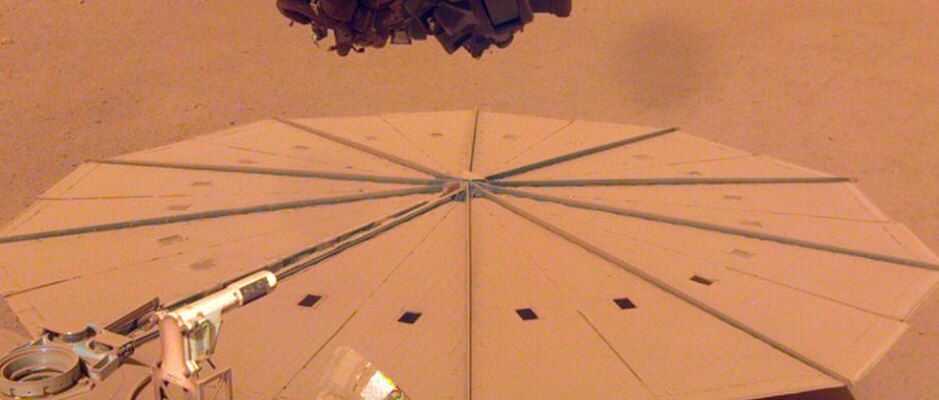After having largely exceeded the duration planned for its mission, the lander InSight begins the operations that will lead to its shutdown at the end of the year. The teams are focusing on energy savings to operate the seismometer for a few more months and collect as much data as possible.
Was the big “Marsquake” of early May his last major one?
I turn off in 5 minutes!
With 1,300 earthquakes (the element, not the planet) recorded during the Insight mission, the balance sheet is positive. The lander, which landed in November 2018 on Elysium Planitia, an area devoid of relief, was the first to place a precision seismometer, SEIS, on the ground of Mars… And for the latter, France is a major contributor of the project (CNES is prime contractor, and the Institut de Physique du Globe de Paris has scientific responsibility.
The earthquake, or “Marsquake”, detected on May 4, the largest of all with its magnitude 5, was perhaps one of the last… because the InSight mission is coming to an end. Scientific data collection is expected to stop at the end of the summer, and the platform itself will shut down by next winter.
More dust, less energy
This end of mission is multiple. Yes, the main factor is the Martian dust present on InSight’s solar panels. The latter can only supply the batteries with a tenth of the energy available immediately after landing, and the coming season (the Martian winter) will bring an atmosphere traditionally even more dusty and sandy.
However, the mission is also complete (and has been since the spring of 2021), and the extension of InSight’s lifespan has its limits. Airtime, ground crews, relaying data back to Earth: it all adds up to a budget. If the mission stops, it is therefore not for lack of having brought enough to clear the panels (which was not possible, the Insight platform was at the limit of what its design could provide), but quite simply because it has had its day.
The latest savings
In the weeks to come, the first operations will be put in place to save energy and extend the collection of seismographic data as much as possible.
The first element to be placed in the “final rest” position will be the robotic arm. Then, the recordings of the ground vibrations will be more spaced out and concentrated on the most productive periods of the day, in particular at night. It is at this time in particular that there is the least wind on Elysium Planitia, while in the periods of sunrise and sunset there is measurement noise related to thermal changes. We will have to wish beautiful last discoveries!
On the same subject :
So what is this strange rectangular shape discovered on Mars by Curiosity?
Source :NASA

2